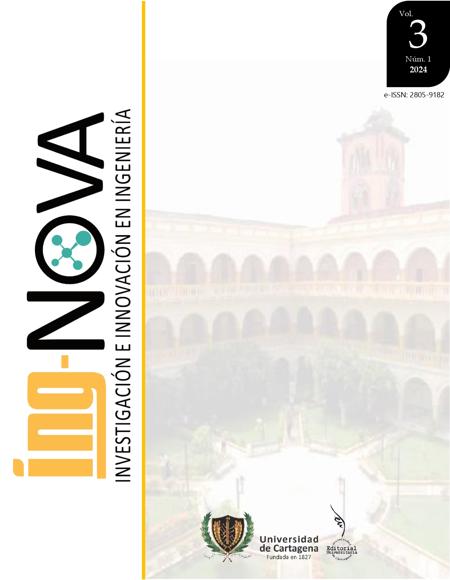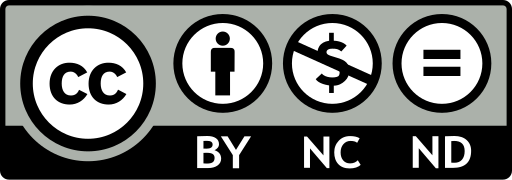Sustancias perfluoroalquiladas como contaminantes emergentes preocupantes sin un panorama de tratamiento viable: revisión
Perfluoroalkylated Substances as Emerging Contaminants of concern without a viable treatment landscape: Review
Contenido principal del artículo
Resumen
Los ácidos perfluoroalquílicos (PFAA) son un grupo de sustancias químicas sintéticas persistentes con propiedades distintivas, como una gran estabilidad térmica y química, que los hacen adecuados para una amplia gama de aplicaciones. Se producen desde la década de 1950, lo que ha provocado una contaminación global del medio ambiente y la fauna. Son resistentes a la biodegradación y tienen tendencia a bioacumularse en los organismos y biomagnificarse en la cadena alimentaria. Las sustancias poli y perfluoroalquiladas (PFAs) se han utilizado ampliamente en muchos productos industriales y de consumo. Esta investigación presenta los problemas asociados a los PFASs contaminantes emergentes (CE), sus efectos en el medio ambiente debido a la bioacumulación, los métodos de detección y las tecnologías convencionales y no convencionales con las que se tratan. Se realizó una revisión de los estudios más relevantes de los últimos años. Se constató que las tecnologías convencionales basadas en la adsorción son ampliamente utilizadas, principalmente con carbones activados, con eficiencias de eliminación de contaminantes de hasta el 95%. Sin embargo, otras tecnologías como los fluidos supercríticos y las membranas no son suficientemente eficaces, por lo que se requieren alternativas más eficientes. Las tecnologías de oxidación avanzada resultaron ser una opción sostenible válida para el tratamiento de estos contaminantes.
Palabras clave:
Descargas
Detalles del artículo
Referencias (VER)
J. Rijnders et al., “Perfluoroalkylated acids (PFAAs) accumulate in field-exposed snails (Cepaea sp.) and affect their oxidative status,” Sci. Total Environ., vol. 790, p. 148059, 2021.
J. W. Lee, K. Choi, K. Park, C. Seong, S. Do Yu, and P. Kim, “Adverse effects of perfluoroalkyl acids on fish and other aquatic organisms: A review,” Sci. Total Environ., vol. 707, p. 135334, 2020.
R. Salgado, S. López-Doval, N. Pereiro, and A. Lafuente, “Perfluorooctane sulfonate (PFOS) exposure could modify the dopaminergic system in several limbic brain regions,” Toxicol. Lett., vol. 240, no. 1, pp. 226–235, 2016.
V. Ciccotelli, M. C. Abete, and S. Squadrone, “PFOS and PFOA in cereals and fish: Development and validation of a high performance liquid chromatography-tandem mass spectrometry method,” Food Control, vol. 59, pp. 46–52, 2016.
M. C. O. Souza et al., “Exposure to per- and polyfluorinated alkyl substances in pregnant Brazilian women and its association with fetal growth,” Environ. Res., vol. 187, p. 109585, 2020.
M. P. Krafft and J. G. Riess, “Selected physicochemical aspects of poly- and perfluoroalkylated substances relevant to performance, environment and sustainability—Part one,” Chemosphere, vol. 129, pp. 4–19, 2015.
K. M. Annunziato, C. E. Jantzen, M. C. Gronske, and K. R. Cooper, “Subtle morphometric, behavioral and gene expression effects in larval zebrafish exposed to PFHxA, PFHxS and 6:2 FTOH,” Aquat. Toxicol., vol. 208, pp. 126–137, 2019.
M. Chynel, C. Munschy, N. Bely, K. Héas-Moisan, C. Pollono, and S. Jaquemet, “Legacy and emerging organic contaminants in two sympatric shark species from Reunion Island (Southwest Indian Ocean): Levels, profiles and maternal transfer,” Sci. Total Environ., vol. 751, p. 141807, 2021.
K. Eggers Pedersen et al., “Brain region-specific perfluoroalkylated sulfonate (PFSA) and carboxylic acid (PFCA) accumulation and neurochemical biomarker Responses in east Greenland polar Bears (Ursus maritimus),” Environ. Res., vol. 138, pp. 22–31, 2015.
M. Long, A.-K. S. Knudsen, H. S. Pedersen, and E. C. Bonefeld-Jørgensen, “Food intake and serum persistent organic pollutants in the Greenlandic pregnant women: The ACCEPT sub-study,” Sci. Total Environ., vol. 529, pp. 198–212, 2015.
Z. Xie et al., “Occurrence of legacy and emerging organic contaminants in snow at Dome C in the Antarctic,” Sci. Total Environ., vol. 741, p. 140200, 2020.
A. de la Torre, I. Navarro, P. Sanz, and M. de los Ángeles Mártinez, “Occurrence and human exposure assessment of perfluorinated substances in house dust from three European countries,” Sci. Total Environ., vol. 685, pp. 308–314, 2019.
J. Rovira et al., “Prenatal exposure to PFOS and PFOA in a pregnant women cohort of Catalonia, Spain,” Environ. Res., vol. 175, pp. 384–392, 2019.
T. Groffen, A. Lopez-Antia, W. D’Hollander, E. Prinsen, M. Eens, and L. Bervoets, “Perfluoroalkylated acids in the eggs of great tits (Parus major) near a fluorochemical plant in Flanders, Belgium,” Environ. Pollut., vol. 228, pp. 140–148, 2017.
S. Manea et al., “Exposure to PFAS and small for gestational age new-borns: A birth records study in Veneto Region (Italy),” Environ. Res., vol. 184, p. 109282, 2020.
M. Lorenzo, M. Farré, C. Blasco, M. Onghena, Y. Picó, and D. Barceló, “Perfluoroalkyl substances in Breast milk, infant formula and baby food from Valencian Community (Spain),” Environ. Nanotechnology, Monit. Manag., vol. 6, pp. 108–115, 2016.
M. Ghisari, M. Long, D. M. Røge, J. Olsen, and E. C. Bonefeld-Jørgensen, “Polymorphism in xenobiotic and estrogen metabolizing genes, exposure to perfluorinated compounds and subsequent breast cancer risk: A nested case-control study in the Danish National Birth Cohort,” Environ. Res., vol. 154, pp. 325–333, 2017.
D. Borg, B.-O. Lund, N.-G. Lindquist, and H. Håkansson, “Cumulative health risk assessment of 17 perfluoroalkylated and polyfluoroalkylated substances (PFASs) in the Swedish population,” Environ. Int., vol. 59, pp. 112–123, 2013.
S. Denys, S. Fraize-Frontier, O. Moussa, B. Le Bizec, B. Veyrand, and J.-L. Volatier, “Is the fresh water fish consumption a significant determinant of the internal exposure to perfluoroalkylated substances (PFAS)?,” Toxicol. Lett., vol. 231, no. 2, pp. 233–238, 2014.
L. Ahrens et al., “Poly- and perfluoroalkylated substances (PFASs) in water, sediment and fish muscle tissue from Lake Tana, Ethiopia and implications for human exposure,” Chemosphere, vol. 165, pp. 352–357, 2016.
T. Groffen et al., “Preliminary study on the distribution of metals and persistent organic pollutants (POPs), including perfluoroalkylated acids (PFAS), in the aquatic environment near Morogoro, Tanzania, and the potential health risks for humans,” Environ. Res., vol. 192, p. 110299, 2021.
J. K. Ludwicki et al., “Hazard quotient profiles used as a risk assessment tool for PFOS and PFOA serum levels in three distinctive European populations,” Environ. Int., vol. 74, pp. 112–118, 2015.
M. Trojanowicz et al., “A survey of analytical methods employed for monitoring of Advanced Oxidation/Reduction Processes for decomposition of selected perfluorinated environmental pollutants,” Talanta, vol. 177, pp. 122–141, 2018.
M. Sgroi, T. Anumol, P. Roccaro, F. G. A. Vagliasindi, and S. A. Snyder, “Modeling emerging contaminants breakthrough in packed bed adsorption columns by UV absorbance and fluorescing components of dissolved organic matter,” Water Res., vol. 145, pp. 667–677, 2018.
H. N. Phong Vo et al., “Poly‐and perfluoroalkyl substances in water and wastewater: A comprehensive review from sources to remediation,” J. Water Process Eng., vol. 36, p. 101393, 2020.
A. Zaggia, L. Conte, L. Falletti, M. Fant, and A. Chiorboli, “Use of strong anion exchange resins for the removal of perfluoroalkylated substances from contaminated drinking water in batch and continuous pilot plants,” Water Res., vol. 91, pp. 137–146, 2016.
H.-Y. Chen, W. Liao, B.-Z. Wu, H. Nian, K. Chiu, and H.-K. Yak, “Removing perfluorooctane sulfonate and perfluorooctanoic acid from solid matrices, paper, fabrics, and sand by mineral acid suppression and supercritical carbon dioxide extraction,” Chemosphere, vol. 89, no. 2, pp. 179–184, 2012.
F. S. Freyria, F. Sannino, and B. Bonelli, “Chapter 2 - Common wastewater contaminants versus emerging ones: an overview,” in Nanomaterials for the Detection and Removal of Wastewater Pollutants, B. Bonelli, F. S. Freyria, I. Rossetti, and R. Sethi, Eds. Elsevier, 2020, pp. 19–46.
C. Teodosiu, A.-F. Gilca, G. Barjoveanu, and S. Fiore, “Emerging pollutants removal through advanced drinking water treatment: A review on processes and environmental performances assessment,” J. Clean. Prod., vol. 197, pp. 1210–1221, 2018.
A. R. L. Ribeiro, M. N. Nadagouda, and D. D. Dionysiou, “Photocatalytic degradation of pharmaceuticals and other contaminants of emerging concern in water and wastewater,” Curr. Opin. Green Sustain. Chem., vol. 31, p. 100507, 2021.
V. J. P. Vilar, D. D. Dionysiou, R. Torres-Palma, S. Malato, and G. L. Puma, “Future Trends in Photocatalysis for Environmental Applications,” J. Hazard. Mater., vol. 372, pp. 1–2, 2019.
L. Rizzo et al., “Consolidated vs new advanced treatment methods for the removal of contaminants of emerging concern from urban wastewater,” Sci. Total Environ., vol. 655, no. November 2018, pp. 986–1008, 2019.
G. Li Puma, F. Machuca-Martínez, M. Á. Mueses, J. Colina-Márquez, and C. Bustillo-Lecompte, “Scale-Up and Optimization for Slurry Photoreactors,” in Advanced Oxidation Processes - Applications, Trends, and Prospects, First., C. Bustillo-Lecompte, Ed. IntechOpen, 2020, pp. 1–23.
V. Romero, O. González, B. Bayarri, P. Marco, J. Giménez, and S. Esplugas, “Degradation of Metoprolol by photo-Fenton: Comparison of different photoreactors performance,” Chem. Eng. J., vol. 283, pp. 639–648, Jan. 2016.
R. Vinoth Kumar, M. O. Barbosa, A. R. Ribeiro, S. Morales-Torres, M. F. R. Pereira, and A. M. T. Silva, “Advanced oxidation technologies combined with direct contact membrane distillation for treatment of secondary municipal wastewater,” Process Saf. Environ. Prot., vol. 140, pp. 111–123, 2020.
A. H. Khan et al., “Application of advanced oxidation processes followed by different treatment technologies for hospital wastewater treatment,” J. Clean. Prod., vol. 269, 2020.
A. R. Lado Ribeiro, N. F. F. Moreira, G. Li Puma, and A. M. T. Silva, “Impact of water matrix on the removal of micropollutants by advanced oxidation technologies,” Chem. Eng. J., vol. 363, no. October 2018, pp. 155–173, 2019.
M. A. Mueses, J. Colina-Márquez, F. Machuca-Martínez, and G. Li Puma, “Recent advances on modeling of solar heterogeneous photocatalytic reactors applied for degradation of pharmaceuticals and emerging organic contaminants in water,” Curr. Opin. Green Sustain. Chem., vol. 30, p. 100486, 2021.



 PDF
PDF
 FLIP
FLIP





